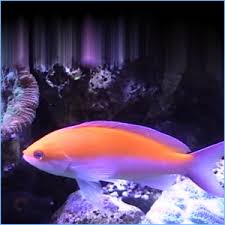The dragon, a symbol of power, wisdom, and prosperity, has been a cornerstone of Chinese culture for thousands of years. Its depiction in Chinese sculpture has evolved over time, reflecting changes in artistic styles, cultural significance, and societal values. From ancient carvings to contemporary installations, the dragon remains an enduring icon of Chinese heritage.

Ancient Depictions: Guardians of Tradition
In ancient China, dragons were revered as divine creatures that controlled natural elements such as water, rain, and wind. Early depictions in sculpture can be traced back to the Neolithic period, where jade carvings, such as those of the Hongshan culture, portrayed coiled dragons with a simplistic and abstract design. These early representations often emphasized the dragon’s spiritual significance, linking it to rituals and ancestral worship.
By the Shang (1600–1046 BCE) and Zhou (1046–256 BCE) dynasties, dragons became more detailed in bronze sculptures and ceremonial vessels. These intricate designs showcased elongated bodies, serpentine movements, and clawed limbs, symbolizing their role as protectors of the heavens and mediators between gods and humans.
Imperial Dragons: Symbols of Authority
During the Han Dynasty (206 BCE–220 CE) and later the Tang Dynasty (618–907 CE), the dragon’s representation in sculpture grew more sophisticated. It was often associated with imperial power, as the emperor was considered the “Son of Heaven” and the dragon his emblem. Stone carvings of dragons adorned palace walls, tombs, and ceremonial items, emphasizing their grandeur and authority.
One notable example is the Nine-Dragon Wall, a type of screen wall featuring glazed ceramic relief sculptures of dragons, which became popular during the Ming (1368–1644) and Qing (1644–1912) dynasties. These walls, often found in palaces and temples, highlighted the dragon’s imperial association and showcased exceptional craftsmanship.
Transition to Modernity: Blending Tradition with Innovation
As China transitioned into the modern era, the depiction of dragons in sculpture began to blend traditional motifs with contemporary artistic expressions. In the early 20th century, nationalist movements rekindled interest in traditional symbols like the dragon, incorporating them into public sculptures and monuments to evoke a sense of cultural pride.
Modern Chinese sculptors have reinterpreted the dragon in various materials, including metal, glass, and mixed media, to reflect contemporary themes. For instance, large-scale dragon sculptures in urban landscapes often serve as cultural landmarks, blending ancient symbolism with modern design. Artists today use dragons to explore themes of identity, globalization, and the preservation of heritage.
Cultural Significance in Contemporary Times
The dragon’s presence in Chinese sculpture continues to be a powerful reminder of its cultural importance. Whether featured in traditional wooden carvings or avant-garde installations, the dragon symbolizes resilience and adaptability. In public spaces, sculptures of dragons are not only artistic expressions but also embodiments of national identity and pride.
For example, the vibrant dragon sculptures displayed during the annual Chinese New Year celebrations are not just decorative; they represent unity and hope for prosperity in the coming year. Similarly, in international art exhibitions, Chinese sculptors use the dragon to communicate their cultural legacy to a global audience.
Conclusion
The dragon’s journey through Chinese sculpture art—from ancient jade carvings and bronze vessels to modern installations—is a testament to its enduring significance. It has evolved in form and meaning, adapting to the changing tides of history while maintaining its status as a symbol of Chinese identity. As artists continue to reinterpret the dragon, it remains a bridge between tradition and innovation, connecting China’s rich past to its dynamic present.










